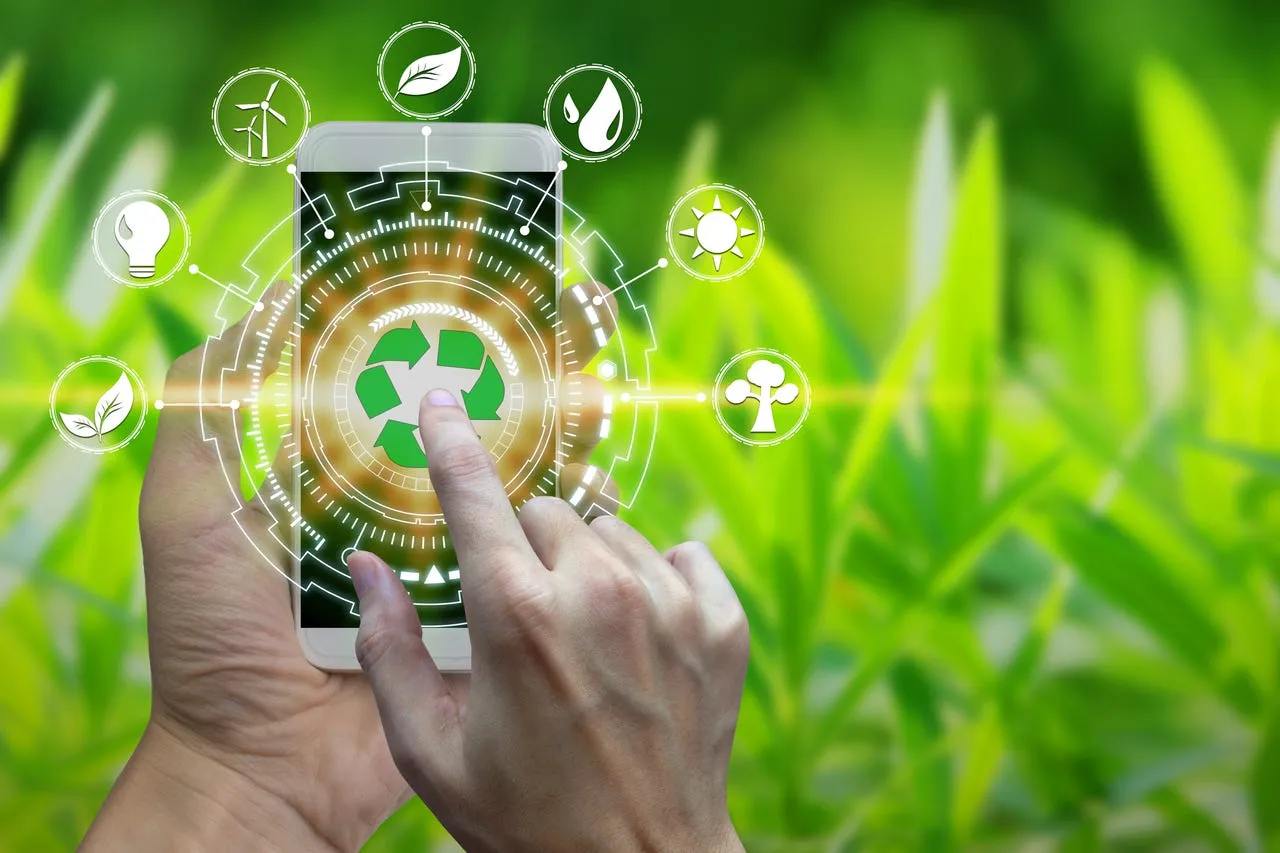In today’s rapidly evolving digital era, technology is not just transforming how we communicate and work—it’s also reshaping how we engage with the planet. As environmental concerns escalate and climate change threatens ecosystems globally, individuals and organizations alike are seeking innovative ways to reduce their carbon footprint. Enter digital sustainability tools: an expanding category of apps, platforms, and services designed to help users live greener, more eco-conscious lives.
Digital tools for sustainable living offer everything from real-time energy tracking to waste reduction strategies and conscious consumerism guidance. Whether you’re aiming to reduce plastic waste, cut down on electricity use, embrace a circular economy, or offset your carbon emissions, there’s likely a digital solution tailored for your goal. These tools empower users with actionable insights, fostering habit change and creating scalable environmental impact. In this article, we’ll explore over 60 of these game-changing digital tools, starting with a detailed breakdown of 10 key tools grouped into thematic sustainability pillars.

The Green Pillars – Essential Digital Tools for a Sustainable Lifestyle
The first ten tools in our guide form what we call “The Green Pillars”—a foundational group that represents the core domains of sustainable living: energy conservation, carbon tracking, food waste management, ethical shopping, eco-friendly transportation, water usage, recycling, sustainable fashion, green investing, and community action.
Each of these tools addresses a unique area of daily life where sustainability can be improved, helping users build holistic, tech-powered lifestyles rooted in environmental responsibility.
1. JouleBug – The All-in-One Sustainability Companion
Category: Habit Formation & Gamification
Why It Matters: JouleBug gamifies eco-friendly actions, helping you form sustainable habits through fun challenges, progress tracking, and community engagement.
How It Works: You log daily green activities—like biking to work or conserving water—and earn points. It integrates with social platforms so you can compete with friends and teams, making sustainability social and addictive.
2. Oroeco – Track Your Personal Carbon Footprint
Category: Carbon Tracking
Why It Matters: Measuring your personal carbon footprint is the first step toward reducing it. Oroeco links your daily spending and habits to CO2 emissions.
How It Works: It syncs with your finances, calculates the emissions from your lifestyle choices (like food, travel, and energy), and offers practical tips for reduction.
3. Too Good To Go – Fight Food Waste, One Meal at a Time
Category: Food Waste Reduction
Why It Matters: Globally, one-third of all food is wasted. This app connects users to local restaurants and bakeries with surplus meals.
How It Works: You buy “Magic Bags” of unsold food at discounted prices, saving meals from the trash while saving money.
4. DoneGood – Ethical Shopping, Simplified
Category: Ethical Consumerism
Why It Matters: Every dollar you spend can support eco-friendly and fair labor businesses. DoneGood is like Amazon for conscious shoppers.
How It Works: Browse vetted ethical brands, discover sustainable deals, and shop products based on your values—like organic, vegan, or carbon-neutral.
5. Airlift – Greener Transportation Choices
Category: Sustainable Mobility
Why It Matters: Transportation is one of the largest contributors to carbon emissions. Airlift promotes eco-friendly commuting alternatives.
How It Works: It connects users to carpool groups, public transit schedules, and bike-share services in real-time, reducing reliance on single-occupancy vehicles.
6. DripDrop – Manage Water Consumption at Home
Category: Water Conservation
Why It Matters: Water scarcity is a growing concern globally. This smart home app monitors and reduces your household water usage.
How It Works: It connects to smart meters, provides leak alerts, and shows usage trends by appliance to help you adjust your habits.
7. RecycleCoach – Know What, When & How to Recycle
Category: Waste Management
Why It Matters: Recycling errors lead to contamination and inefficiency. RecycleCoach provides localized recycling education.
How It Works: Enter your zip code and get real-time info on collection schedules, sorting rules, and recycling best practices in your area.
8. Good On You – Sustainable Fashion Ratings
Category: Ethical Fashion
Why It Matters: Fast fashion is highly polluting. Good On You rates brands on labor, environment, and animal welfare.
How It Works: Search your favorite clothing brands to see if they meet sustainability standards and discover better alternatives.
9. Carbon Collective – Climate-Friendly Investing
Category: Green Finance
Why It Matters: Where you invest matters. Carbon Collective offers a diversified portfolio that excludes fossil fuels and backs clean tech.
How It Works: It offers low-fee, automated investment portfolios aligned with environmental values, along with tools to track impact.
10. ioby (In Our Back Yards) – Community-Led Sustainability Projects
Category: Civic Engagement
Why It Matters: Grassroots action is essential to sustainability. ioby connects people to fund and support local environmental initiatives.
How It Works: You can propose, support, or donate to neighborhood sustainability projects—like community gardens, solar co-ops, and cleanups.

From Your Home to the Marketplace — Digital Allies for a Greener Life
As we explore sustainable living more deeply, it becomes evident that the home and marketplace are two of the most impactful arenas for change. How we use electricity, manage our appliances, dispose of waste, shop, and consume media all contribute to our environmental footprint. Fortunately, digital tools have evolved to support conscious behavior in every room and transaction.
11. Wattson – Monitor Home Energy Use in Real-Time
Why It Matters: Real-time feedback on energy consumption helps households reduce electricity waste and lower bills.
How It Works: Connect Wattson to your smart meter to get real-time insights, cost predictions, and efficiency tips. It also nudges you to switch off idle appliances.
12. GreenPocket – Personalized Energy Reports
Why It Matters: Energy efficiency isn’t one-size-fits-all. GreenPocket visualizes your consumption over time and gives personalized recommendations.
How It Works: Integrates with your utility provider or smart meter, generates monthly and seasonal reports, and offers benchmarking against similar homes.
13. EnergyHub – Connect & Control Smart Home Devices
Why It Matters: Coordinated smart devices can significantly reduce wasteful energy use.
How It Works: Manage thermostats, lighting, and appliances from one dashboard. Automatically shift loads during off-peak hours for energy savings.
14. Think Dirty – Scan Product Ingredients for Eco & Health Impact
Why It Matters: Many personal care and cleaning products contain harmful chemicals. Think Dirty helps consumers avoid them.
How It Works: Scan barcodes to get toxicity scores and discover eco-friendly, cruelty-free alternatives instantly.
15. Refill – Find Places to Refill Water Bottles
Why It Matters: Reducing single-use plastic bottles is a low-effort, high-impact action.
How It Works: Maps refill stations in cities globally. Promotes zero-waste travel and daily hydration habits without plastic waste.
16. Litterati – Map & Track Litter Clean-Up
Why It Matters: Data drives change. Litterati turns local cleanups into data-driven advocacy efforts.
How It Works: Take photos of litter, tag it, and upload. The data helps cities and companies reduce waste at the source.
17. Ecosia – The Tree-Planting Search Engine
Why It Matters: Ecosia uses its ad revenue to fund global reforestation. Over 160 million trees planted to date.
How It Works: Simply set Ecosia as your default browser. Each search contributes to tree planting, making everyday browsing impactful.
18. Giki Zero – Personal Sustainability Planner
Why It Matters: Managing a sustainable lifestyle needs a roadmap. Giki Zero provides it.
How It Works: Tracks carbon output across categories (food, travel, home), and sets achievable improvement goals with eco scorecards.
19. Yayzy – Real-Time Carbon Emissions from Shopping
Why It Matters: Knowing the carbon footprint of purchases in real-time influences better choices.
How It Works: Connects to your bank and breaks down each transaction by CO2 impact. Suggests greener alternatives and offsets.
20. Joro – Automatic Carbon Tracking for Daily Life
Why It Matters: Passive tracking encourages behavioral change without manual input.
How It Works: Monitors financial activity to estimate carbon impact, and helps fund verified carbon offset projects.

21. Vinted – Buy & Sell Preloved Fashion
Why It Matters: Circular fashion reduces textile waste and demand for fast fashion.
How It Works: List, buy, and ship secondhand clothes, shoes, and accessories. Includes community forums for eco-style tips.
22. ThredUP – Online Thrift Store for Sustainable Fashion
Why It Matters: Extends clothing life cycle and reduces landfill pressure.
How It Works: Shop and sell high-quality secondhand items. Uses data to show how much water, carbon, and waste is saved per purchase.
23. BlaBlaCar – Carpool with Verified Travelers
Why It Matters: Shared rides reduce carbon emissions per passenger and traffic congestion.
How It Works: Connects drivers with empty seats to passengers on similar routes, making commuting and intercity travel more efficient.
24. Karma – Save Surplus Restaurant Food
Why It Matters: Like Too Good To Go, Karma fights food waste by selling unsold meals.
How It Works: Users get alerts when restaurants near them list available meals at discount prices.
25. HappyCow – Discover Vegan & Sustainable Dining
Why It Matters: Plant-based diets have a lower environmental impact. HappyCow helps locate vegan and eco-conscious eateries.
How It Works: Search by location, cuisine, or dietary need. Community reviews include sustainability tags and zero-waste metrics.
26. GoGreen Carpool – Localized Green Ride Sharing
Why It Matters: Tailored for city-specific and community-based carpooling to reduce emissions.
How It Works: Groups local commuters, students, and employees by destination. Emphasizes repeat pairings and verified users.
27. PaperKarma – Stop Unwanted Mail & Save Trees
Why It Matters: Paper waste from junk mail is avoidable.
How It Works: Snap a photo of unsolicited mail and PaperKarma contacts the sender to remove your address from their list.
28. OLIO – Share Extra Food with Neighbors
Why It Matters: Household food waste is a massive environmental issue. OLIO builds community while reducing waste.
How It Works: List items (like leftover meals, pantry goods, or homegrown produce) and coordinate safe pickups with neighbors.
29. Buycott – Support Brands That Align With Your Values
Why It Matters: Conscious consumerism drives corporate sustainability.
How It Works: Scan barcodes to see brand affiliations, political donations, and environmental records. Join campaigns that reflect your values.
30. Sustainably – Automate Charitable Giving Based on Purchases
Why It Matters: Micro-donations can add up and support causes aligned with climate justice and sustainability.
How It Works: Round up your daily transactions and donate the change to vetted environmental nonprofits.

Eco Enterprise Essentials – Digital Tools for Sustainable Work and Business Operations
Workplaces and businesses—whether traditional offices, startups, or remote teams—contribute significantly to carbon emissions and resource consumption. Yet, the digital realm offers a wealth of innovative tools that allow organizations to adopt sustainable practices with ease and visibility. From offsetting business travel to promoting digital sustainability reports, these tools enable impactful change where it matters: the workplace.
31. Planetly – Carbon Management for Enterprises
Why It Matters: Companies need detailed carbon analytics to plan their reduction goals and comply with ESG standards.
How It Works: Planetly helps businesses measure, analyze, and reduce emissions with AI-powered dashboards, detailed reporting, and goal tracking.
32. Ecochain – Environmental Footprinting for Products & Operations
Why It Matters: Lifecycle analysis (LCA) is crucial for manufacturers and product designers.
How It Works: Ecochain tracks a product’s environmental footprint across sourcing, production, and delivery, offering insights for greener decision-making.
33. CoolClimate Calculator (Business Edition)
Why It Matters: Understanding carbon emissions is the first step toward change for any size company.
How It Works: Offers industry-specific emission estimates and suggests reduction strategies, tailored for SMBs and startups.
34. Cloverly – Offset Emissions in Real-Time
Why It Matters: Businesses can automate carbon offsetting for transactions, delivery services, and customer interactions.
How It Works: API integration calculates emissions per activity (e.g., shipping) and purchases offsets automatically, enabling carbon-neutral transactions.
35. Greenly – ESG & Carbon Tracking for Small Businesses
Why It Matters: Small businesses often lack the resources for comprehensive sustainability. Greenly makes it simple and affordable.
How It Works: Uses financial data to track emissions, generate carbon reports, and suggest policy changes. It’s ESG-compliant and easy to integrate.
36. SustainaBase – Corporate Sustainability Reporting Made Easy
Why It Matters: Sustainability disclosures are now a global standard.
How It Works: Collects, structures, and publishes CSR data. Integrates emissions, energy use, water savings, and social impact into easy-to-read reports.
37. Treedom – Grow Company Forests
Why It Matters: Tree planting offers symbolic and measurable climate action.
How It Works: Companies can sponsor tree planting campaigns around the world and track their CO2 impact via GPS-linked dashboards.
38. ClimatePartner – Business Climate Action Strategy
Why It Matters: Aligning with the Paris Agreement requires long-term planning.
How It Works: Offers bespoke sustainability strategies including carbon offsetting, sustainable packaging advice, and green marketing consultation.
39. Pawprint for Business – Employee Engagement for Sustainability
Why It Matters: Culture change starts with people.
How It Works: Pawprint empowers employees to understand and reduce their carbon footprint through challenges, team goals, and green incentives.
40. DocuSign – Reduce Paper Waste
Why It Matters: The shift to digital contracts saves billions of pages annually.
How It Works: Enables secure electronic signatures, document storage, and workflow automation—reducing printing and shipping emissions.

Nature Tech & Eco-Education – Digital Tools to Preserve and Learn From the Planet
Living sustainably isn’t just about reducing what we consume; it’s also about reconnecting with the environment and understanding our place within it. This group of tools empowers users to protect biodiversity, learn about environmental science, engage with conservation efforts, and make informed decisions when exploring the outdoors.
41. Seek by iNaturalist – Identify Plants and Animals in Real-Time
Why It Matters: Learning to recognize species around you builds respect for local ecosystems.
How It Works: Use your camera to identify wildlife. The app provides instant feedback and logs sightings for scientific research.
42. Pl@ntNet – Collaborative Plant Identification
Why It Matters: Plant identification supports gardening, agriculture, and conservation.
How It Works: Upload photos of leaves, flowers, or bark, and receive AI-driven identifications verified by a global community of botanists.
43. AllTrails – Eco-Conscious Hiking & Trail Discovery
Why It Matters: Promoting respectful outdoor recreation helps preserve parks and forests.
How It Works: Offers detailed trail guides, user reviews, and eco-tips. Filters include dog-friendly, low-impact, or nature preserve trails.
44. eBird – Bird Tracking for Conservation
Why It Matters: Birds are biodiversity indicators, and citizen birdwatchers generate critical conservation data.
How It Works: Log bird sightings, track migrations, and contribute data to scientists studying population trends and climate effects.
45. Global Forest Watch – Monitor Deforestation in Real-Time
Why It Matters: Forest loss is a major carbon contributor. Real-time monitoring promotes accountability.
How It Works: Uses satellite imagery to track forest change. Visualizes alerts, hotspots, and conservation areas globally.
46. OceanHero – Search Engine That Cleans the Ocean
Why It Matters: Like Ecosia, OceanHero funds environmental action—this time by removing plastic from oceans.
How It Works: Every search you make contributes to the retrieval of ocean-bound plastic waste via cleanup partners.
47. Earth School (TED-Ed & UNEP) – Environmental Learning for All Ages
Why It Matters: Education empowers change. Earth School offers engaging environmental science for children and adults.
How It Works: Interactive lessons, quizzes, and videos on sustainability, biodiversity, and human impact. Designed for schools and individuals alike.
48. Nature Conservancy App – Engage with Conservation Projects
Why It Matters: Supporting conservation can be personal and participatory.
How It Works: Learn about protected areas, track donation impact, and receive invitations to local conservation events or volunteer opportunities.
49. WWF Together – Learn About Endangered Species
Why It Matters: Raising awareness of endangered species motivates action.
How It Works: Offers immersive storytelling experiences on endangered wildlife. Includes facts, challenges, and virtual habitat exploration.
50. EcoBuddy – Outdoor Challenges and Nature Habits
Why It Matters: Building sustainable routines includes outdoor activity and nature appreciation.
How It Works: Daily eco-challenges promote interaction with the environment—like planting native species, picking up litter, or learning natural history.

Digital Zero-Waste Warriors – Tools for Minimalist, Circular, and Waste-Free Living
The zero-waste movement emphasizes reducing trash sent to landfills by rethinking how we buy, use, and dispose of products. Minimalism, on the other hand, is about simplifying our lives, avoiding excess, and consuming intentionally. Combined with the circular economy—a system where products are reused and recycled rather than discarded—these principles can significantly lighten our environmental load. Here are 10 digital tools that champion these values.
51. Loop – Circular Shopping Platform
Why It Matters: Reduces single-use packaging by offering everyday products in reusable containers.
How It Works: Order from brands like Nestlé or PepsiCo in durable containers. After use, containers are picked up, cleaned, and reused.
52. Bunz – Barter Marketplace for Local Swaps
Why It Matters: Swapping reduces demand for new items and cuts down on waste.
How It Works: Trade anything from clothes to electronics using digital credits—no money needed. Encourages local circular economies.
53. ShareWaste – Connect with Compost Hosts
Why It Matters: Food scraps often end up in landfills, emitting methane. Composting diverts this waste and enriches soil.
How It Works: Users without compost bins can give scraps to hosts who collect or receive organic waste for composting.
54. TrashNothing – Give & Get Items Freely
Why It Matters: Freecycling is one of the simplest zero-waste actions.
How It Works: A hyperlocal app where users give away or request items—from old furniture to electronics—keeping them out of the landfill.
55. Yerdle – Resale-as-a-Service for Brands
Why It Matters: Extends product life and promotes sustainable brand loyalty.
How It Works: Brands partner with Yerdle to offer customers options to resell, refurbish, or return products instead of discarding them.
56. NoWaste – Inventory Management for Food
Why It Matters: Helps reduce food waste by keeping track of what you have, need, and must consume soon.
How It Works: Scan receipts or enter food items manually. Tracks expiry dates, suggests recipes, and notifies you before items spoil.
57. Depop – Resell Fashion with Style
Why It Matters: Combines sustainability and fashion by creating a secondhand fashion economy for Gen Z.
How It Works: Users can buy and sell clothes easily, with an Instagram-style interface that makes thrifting trendy and social.
58. BuyMeOnce – Shop for Durable, Long-Lasting Products
Why It Matters: Investing in quality over quantity reduces long-term waste.
How It Works: Curates products that are built to last a lifetime, with transparent warranties and ethical sourcing.
59. TrashOut – Report Illegal Dumping
Why It Matters: Community awareness and involvement are crucial for waste management.
How It Works: Users report illegal trash dumps with GPS locations and photos, helping authorities and communities take action.
60. Minimalist Phone – Declutter Your Digital Life
Why It Matters: Digital minimalism reduces energy use and mental clutter.
How It Works: Transforms your smartphone into a distraction-free, simplified tool by replacing your default launcher with a minimalist interface.

Smart Communities & Civic Sustainability – Digital Platforms for Urban & Public Eco-Innovation
As cities become denser and more technologically integrated, they also face increasing environmental challenges—pollution, waste, energy consumption, and transportation inefficiencies. However, with the right digital tools, cities and citizens alike can drive systemic, scalable sustainability solutions. This group features platforms that empower communities to crowdsource innovation, monitor urban sustainability, and collaborate for a greener future.
61. Citymapper – Eco-Aware Urban Navigation
Why It Matters: Smart commuting reduces carbon emissions, traffic congestion, and energy use.
How It Works: Offers real-time public transport, biking, and walking routes. Highlights eco-friendly travel options like bike sharing and green transit.
62. AirVisual – Global Air Quality Monitoring
Why It Matters: Air pollution kills millions yearly and worsens climate change.
How It Works: Shows hyperlocal and global air quality in real time. Users can plan outdoor activities and push for cleaner urban policy with data.
63. StreetComplete – Map Your City’s Missing Infrastructure
Why It Matters: Open data can drive local improvements in sustainability, accessibility, and safety.
How It Works: Gamified way to complete OpenStreetMap data—like missing bike lanes, waste bins, or sidewalks—through citizen collaboration.
64. GreenAtlas – Urban Tree Canopy Visualization
Why It Matters: Trees cool cities, clean air, and support biodiversity.
How It Works: Uses satellite imagery and local data to map tree cover and identify areas for greening projects.
65. Nextdoor (Sustainability Forums) – Localized Environmental Action
Why It Matters: Neighborhood-scale initiatives often have immediate impact.
How It Works: Residents organize cleanups, tool libraries, ride shares, and local green events within their communities.
66. EcoCity Builders – 3D Mapping for Sustainable City Design
Why It Matters: Urban planning needs sustainability baked into the infrastructure.
How It Works: Provides visual tools and platforms for urban planners, governments, and activists to simulate and design eco-efficient cities.
67. Smart Citizen Kit – DIY Environmental Sensing Hardware
Why It Matters: Community-collected data fills gaps left by governments.
How It Works: Sensor kits measure noise, temperature, air quality, and humidity. Data feeds into a public platform to map urban health metrics.
68. FixMyStreet – Report and Track Local Environmental Issues
Why It Matters: Transparency and accountability improve public services and civic trust.
How It Works: Citizens can report issues like illegal dumping, broken lights, or blocked storm drains. Reports are sent directly to local authorities.
69. Sustainable Development Goals Tracker
Why It Matters: Monitoring national and global sustainability progress is essential for accountability.
How It Works: Tracks indicators related to the UN’s SDGs, from clean water and energy to climate action and responsible consumption.
70. OpenIDEO – Crowdsourced Solutions for Global Challenges
Why It Matters: Innovation flourishes when it’s open and collaborative.
How It Works: Hosts challenges where individuals, NGOs, and businesses co-create sustainability solutions—from circular design to climate resilience.

As we’ve explored in this comprehensive guide, technology isn’t the enemy of sustainability—it’s one of our most powerful allies. From individual lifestyle choices to community engagement and corporate climate action, digital tools are redefining what it means to live green. With over 70 apps, platforms, and systems now at your fingertips, every action, no matter how small, can contribute to a global shift towards sustainability.
Whether you’re tracking your carbon footprint, upcycling your wardrobe, finding a nearby compost drop-off, or collaborating with your neighbors on clean energy initiatives, these tools offer real-world solutions with measurable impact. They transform sustainability from an abstract ideal into a daily, data-driven, interactive practice.










